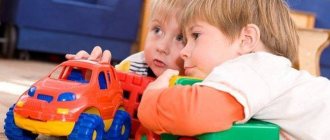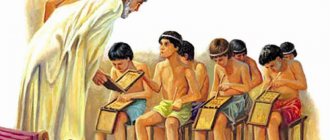Concept and nature of socialization
Man is a social being. From his earliest days, he is surrounded by peers and involved in various types of social interactions. A person has his first experience of social communication even before he begins to speak. As a part of society, a person acquires a certain subjective experience, which becomes an integral part of the personality. Socialization is the process and result of the assimilation and subsequent active reproduction of social experience by an individual. The process of socialization is inextricably linked with communication and joint activities of people.
The essence of socialization lies in the combination of adaptation and isolation of a person in a particular society. The process of socialization and adaptation is closely related. Adaptation is understood as the correlation of the requirements and expectations of the social environment for a person with his attitude and social behavior; correlation of a person’s self-esteem and aspirations with his abilities and with the realities of the social environment. Thus, adaptation is the process and result of the transformation of a person into a social being. Separation is the process of individual autonomy in society. The result of this process is a person’s need for his own views (value autonomy), the need for his own attachments (emotional autonomy), the need to solve his own personal problems, the ability to cope with life situations that interfere with his self-transformation, self-determination, self-realization and self-affirmation (behavioral autonomy) . Thus, detachment is the process and result of the formation of human individuality.
It follows that in the process of socialization an internal, unresolved conflict arises between the degree of adaptation of a person in society and the degree of his isolation in society.
Human socialization in the modern world, which has more or less obvious features in one society or another, in each of them has a number of common or similar characteristics.
Stages of socialization.
In every society, human socialization has its own characteristics at different stages. In the most general form, the stages of socialization can be correlated with the age periodization of human life. There are various periodizations, and the following are not generally accepted. It is very conventional (especially after adolescence), but quite convenient from a socio-pedagogical point of view.
A person in the process of socialization goes through the following stages of infancy (from birth to 1 year), early childhood (1-3 years), preschool age (3-6 years), primary school age (6-10 years), early adolescence (10- 12 years), Senior adolescence (12-14 years), early adolescence (15-17 years), adolescence (18-23 years), adolescence (23-30 years), early adulthood (30-40 years) , late maturity (40-55 years), old age (55-65 years), old age (65-70 years), longevity (over 70 years).
Socialization factors
Socialization occurs in the interaction of children, adolescents and young people with various conditions that more or less actively influence their development. These conditions affecting a person are called factors. In fact, not all of them have been identified, and of those that are known, not all have been studied. Among the factors studied, knowledge is very uneven: quite a lot is known about some, little is known about others, and only a little about some. More or less studied conditions or factors of socialization can be divided into four groups.
The first is megafactors (mega means very large, universal) - space, planet, world, which are influenced to one degree or another by other groups of factors of socialization of all inhabitants of the Earth.
The second group is macro factors (macro-large) - country, ethnic group, society, state, which influence the socialization of all residents of certain countries (this influence is mediated by two other groups of factors).
The third group, mesofactors (meso-intermediaries), are the conditions for the socialization of large groups of people that differ from each other: The place and type of locality in which they live (district, village, town, city); belonging to the audience of certain mass communication networks (radio, television, etc.); belonging to certain subcultures. Mesofactors influence human socialization both directly and indirectly through the fourth group - microfactors. They include factors that directly influence specific people who interact with them - family and home, neighborhood, peer groups, educational organizations, various government, religious, private organizations, micro-society.
The most important role in how a person grows, how he is formed, is played by the people in whose direct interaction his life takes place. They are usually called agents of socialization. At different times, the composition of the products is specific.
In addition to primary and prolonged socialization, agents and institutions of socialization are also divided into primary and secondary.
Agents of primary socialization are close and distant relatives, visiting nannies, family friends, peers, teachers, doctors, coaches, and youth group leaders. The term "primary" in sociology refers to everything that represents a person's immediate or close environment. Agents of average socialization are representatives of the administration of a school, university, business, army, church, state, employees of television, radio, press, party, court, etc. The term “secondary” defines something that has a less significant influence on a person.
Primary socialization is most intense in the first half of a person's life, but continues (in descending order) in the second half. On the contrary, secondary socialization covers the second half of life, when a person comes into contact with formal organizations and institutions called institutions of secondary socialization: Industry, state, media, army, court, church, etc.
Agents of primary socialization perform each set of functions (the father is simultaneously a guardian, educator, administrator, teacher, friend), while agents of secondary socialization perform only one or two. The role of agents of primary socialization and their status are unequal: in relation to the child, the role of parents is higher, and peers are in an equal position with him and forgive him many things that parents do not do, for example, violate moral principles and social norms. In a sense, peers and parents influence the child in opposite directions, with the former denying the efforts of the latter.
In other words, a child learns from adults how to be an adult, and from peers how to be a child: to be able to fight, to be smart, to be friends, to be fair, etc. Therefore, parents perceive their child's peers as competitors in order to influence them. A small group of peers performs a vital social function—it facilitates the transition from a state of dependence to independence, from childhood to adulthood. Parents are unlikely to be able to teach their child to be a leader or achieve dominance over others. The socialization functions of primary socialization agents are interconnected: The child’s relatives often replace parents, taking on their socialization functions, and vice versa; the functions of parents and peers are interchangeable; the latter can replace parents. But the same cannot be said about agents of secondary socialization, because they are highly specialized: a judge cannot replace a foreman or teacher.
In addition, unlike agents of primary socialization, agents of secondary socialization pay to perform their role.
The role of agents and institutions
Sociologists distinguish 2 groups of people who influence the development and formation of personality in the process of socialization:
- Primary - familiar people, or informal agents. These include members of a small community who are well known to each other: family, parents, neighbors;
- Secondary – strangers are formal agents or institutions. This is a set of people connected by formal relationships: kindergarten, school, company, enterprise, city, state, etc.
Both groups play different roles and influence the formation of personality in a certain direction:
The education and upbringing of a child from 0 to 3 years old occurs under the influence of the main agents: parents and immediate relatives. They form the motivation and primary attitude of the individual towards others.
- After 3 years, the individual enters into relationships with additional agents: educators, teachers, doctors. Most preschool children actively master thinking and cognitive skills under the influence of informal agents.
- At the age of 8 - 15 (school period) they are influenced by their peers, adults belonging to different social groups, the media, and the Internet. Such a diverse environment does not exclude a negative impact on the individual and the possibility of antisocial behavior.
- Thus, by the age of 15-18, the personality is considered formed. In the future, other social institutions play their role. They use other means that influence her moral and psychological changes.
Means and mechanisms of socialization
Human socialization occurs through a wide range of universal means, the content of which is specific to a particular society, a particular social class, a particular age of socialized people. These include infant nutrition and care; training in housekeeping and hygiene skills; products of material culture surrounding humans; elements of spiritual culture (from lullabies to sculpture); style and content of communication; as well as methods of reward and punishment in families, peer groups, educational and other socializing organizations; the consistent introduction of a person to numerous types and types of relationships in the main spheres of his life - communication, play, knowledge, fact-practical and mental-practical activities, sports, as well as in the family, professional, social and religious spheres.
Every society, every organization, every social group (small or large) in its history develops a complex of positive and negative, formal and informal sanctions - methods of coercion and persuasion, commandments and prohibitions, measures of coercion and pressure, up to physical violence, methods of recognition, awards and rewards. With the help of these measures and methods, the behavior of a person and entire groups of people is brought into line with the models, norms, and values accepted in the culture.
Human socialization in interaction with various factors and agents occurs through a set of, so to speak, “mechanisms.” There are different approaches to considering the “mechanisms” of socialization. For example, the French social psychologist Gabriel Tarde considered imitation to be the most important. The American scientist Uri Bronfenbrenner considers progressive mutual adaptation (adaptation) between an actively growing person and the changing conditions of his life as a mechanism of socialization, and A.V. Petrovsky sees a natural alternation of stages of adaptation, individualization and integration in the process of personality development. Summarizing the available data, A.V. From a pedagogical point of view, Mudrik identifies some universal mechanisms of socialization that should be taken into account and partially used in the process of teaching a person in different age groups. Psychological and socio-psychological mechanisms include the following.
A print (imprint) is the fixation at the level of receptivity and unconsciousness of the signs of vital objects that affect a person. The impression occurs primarily in infancy. However, in later stages it is also possible to imprint any images and sensations.
Existential pressure - mastery of language and unconscious assimilation of norms of social behavior necessary in the process of interaction with significant people.
Imitation - following an example, a pattern. In this case, this is a form of arbitrary and, as a rule, involuntary acquisition of social experience.
Identification is the process of unconsciously identifying with another person, group, or image.
Reflection is an internal dialogue in which a person considers, evaluates, accepts or rejects certain values contained in various institutions of society, family, mutual aid societies, significant people, etc. Reflection can be an internal dialogue of various kinds: between different selves, with real or imaginary people, etc. Through reflection, a person can be shaped and changed by his awareness and experience of the reality in which he lives, his place in this reality, and himself.
Socialization mechanisms include the following.
The traditional mechanism of socialization is a person’s assimilation of norms, standards of behavior, views, stereotypes characteristic of his family and immediate environment. This assimilation is usually carried out at an unconscious level through memorization, an uncritical perception of prevailing stereotypes. The effectiveness of the traditional mechanism is quite obvious when a person knows “how”, “when”, but this knowledge contradicts the traditions of his environment. In this case, the French thinker Michel Montaigne is right, who wrote: “...We can say our things as much as we like, but the customs and general rules of everyday life tire us of them.” Moreover, the effectiveness of the traditional mechanism is manifested in the fact that certain social elements that were learned, for example, in childhood, but are no longer remembered and are not blocked by changes in living conditions (for example, moving from a village to a city), can reappear in human behavior at the next change in living conditions or at a later age.
The institutional mechanism of socialization, as the name suggests, operates in the process of human interaction with the institutions of society and various organizations that are both specifically created for socialization and perform socializing functions in parallel with their main functions (production, social, associative and other structures, as well as mass communication). In the process of human interaction with various institutions and organizations, relevant knowledge and experience of socially acceptable behavior, as well as experience of imitation of socially acceptable behavior and conflict-free implementation of social norms, are increasingly accumulated.
It should be borne in mind that mass communication as a social institution influences the socialization of a person not only through the transmission of certain information, but also through the presentation of behavioral models of characters in books, films, and television programs. The effectiveness of this influence is determined by the fact that, as the reformer of Western European ballet Jean-Georges Nover noted, “since the passions professed by the heroes are stronger and more definite than the passions of ordinary people, they are easier to imitate.” People with age and individual characteristics tend to identify themselves with certain heroes, at the same time perceiving their characteristic behavior patterns, lifestyle, etc.
The stylized mechanism of socialization operates within a certain subculture. Subculture is understood as a set of moral and psychological traits and behavioral manifestations characteristic of people of a certain age or professional or cultural class, which, as a rule, give rise to a certain style of behavior and thinking of a certain age, professional or social group.
The interpersonal mechanism of socialization works in the process of human interaction with subjectively significant people. Parents (at any age), any respected adult, a friend of the same sex or the opposite sex can be significant to him. However, it is not uncommon for interactions with significant others in groups or organizations to have an impact on a person different from the person in the group or organization.
Human socialization, especially of children, adolescents and young men, occurs through all of the above mechanisms. However, for different genders and age groups, sociocultural groups and specific individuals, the role of socialization mechanisms is different, and sometimes this difference is quite significant.
Socialization is teaching a person to comply with social norms
Socialization is the process of assimilation of social norms, morals, rules, and values by an individual so that he becomes a full-fledged unit of society with the ability to interact with the same other units.
Social norms are measures of the proper (desired) behavior of an individual that regulate relationships between people (making them acceptable). Norms are established common to everyone with characteristic rules of behavior and regulate social relations between people.
Social norms emerge over time as a result of the will and conscious activity of people. Moreover, they always correspond to the type of culture and the nature of socialization of society (different nations have different rules of good manners).
It is important to understand that social norms are divided into :
- Mandatory - for example, written into laws that require their implementation and provide penalties for non-compliance.
- Optional (unwritten) are etiquette norms, customs, traditions, rituals, religious norms and moral norms.
Socialization includes the acquisition of skills from such areas as :
- social;
- physical;
- intellectual.
Socialization is a two-way process. On the one hand, this is the transfer of information, experience and rules from society (what is this?). On the other hand, there is the perception and assimilation of them by a person. The success of the process depends on both the “teachers” (social agents) and the “student”.
There are people who parasitize on social norms, forcing others to comply with them, but absolutely do not follow them themselves (they only pretend to). These are the sociopaths we already talked about.







